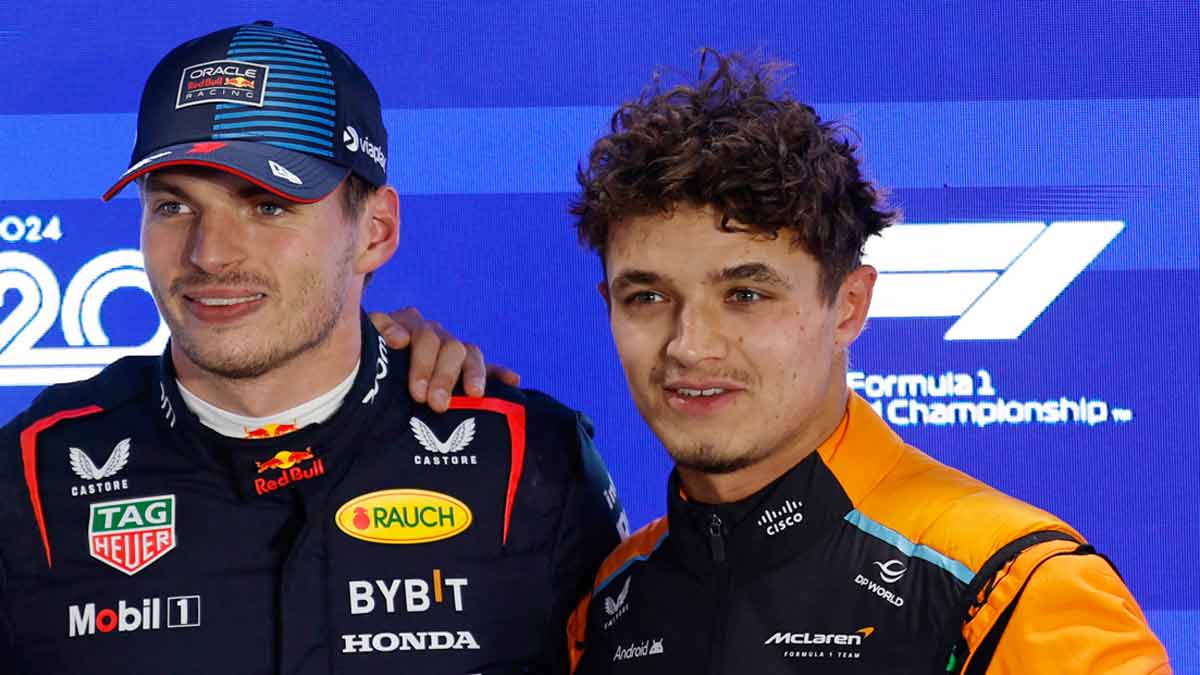On February 29, 2024 — Leap Day — the Formula 1 world collectively groaned as the Bahrain Grand Prix concluded. As predicted, Max Verstappen and his dominant RB20 cruised to victory, leaving teammate Sergio Pérez 22 seconds behind to secure yet another Red Bull 1-2. Pundits and fans alike were left debating, not if, but when Verstappen would join Alain Prost and Sebastian Vettel as a four-time World Champion.
Nine months later, as I write this, the Dutchman has achieved that very milestone — but not with the ease everyone expected. In fact, the 2024 season turned out to be Verstappen’s toughest championship yet, rivalling even the mental and physical demands of his controversial 2021 triumph over Lewis Hamilton.
Unlike 2021, a textbook example of a two-horse race, 2024 was a season brimming with multiple protagonists, fascinating subplots and unexpected twists. Yet, as history often remembers duopolies, so too will this season. While several drivers and teams tried to challenge Verstappen’s dominance, only one proved to be a consistent threat: Lando Norris in the papaya-orange McLaren MCL38.
For 15 races or more, Norris emerged as Verstappen’s most credible rival, even earning the reigning champion’s acknowledgment on and off the track. At one point, Verstappen admitted the retention of his title seemed “more unlikely than not.” But what happened to Norris’s title charge? How did he go from being celebrated as a fan favourite to uniting Verstappen and Hamilton supporters against him? Most importantly: Why didn’t Lando Norris win the 2024 Formula 1 World Drivers’ Championship?
The season’s pivotal moment came at Round 6, the Miami Grand Prix. Until then, Red Bull had enjoyed a comfortable lead atop both the drivers’ and constructors’ standings. Verstappen had won five of the first six races, save for a DNF in Australia, which handed victory to Ferrari’s Carlos Sainz. Pérez was performing surprisingly well, with 103 points to Verstappen’s 136 — an improvement on his underwhelming 2023 season.
In Miami, however, the tide began to turn. Norris, who had been consistently qualifying in the top three, started a modest P5. But a timely safe car, a measured drive, and Verstappen’s uncharacteristic mistake — damaging his car after hitting a bollard — allowed Norris to seize his maiden victory.
Critics dismissed the win as a fluke, yet as the European leg approached, it became clear that McLaren had developed a car capable of challenging Red Bull at certain circuits. At Imola, Verstappen managed to hold off a charging Norris by just 0.7 seconds, signalling that the young Briton and his team were serious contenders.
Still, Norris faced an uphill battle. Trailing Verstappen by 60 points after Imola, McLaren needed flawless strategy, and Norris had to convert his brilliant qualifying performances into consistent race results. Yet, as the season unfolded, cracks began to show.
The stretch from Canada to Belgium was Norris’s best chance to close the gap. However, this period proved disastrous. In Monaco, Norris underperformed, and at Silverstone, a poor tire choice cost him a potential victory. By Hungary and Spa, teammate Oscar Piastri began to outshine him, scoring 113 points to Norris’s 98 over six races (plus a sprint).
McLaren’s strategic missteps played a significant role. Time and again, the team pitted both drivers too late, leaving them vulnerable. At Silverstone, Norris was asked mid-race to choose between tire compounds—a decision that ultimately cost him the win. Meanwhile, Piastri often capitalised on these blunders, showcasing his talent and securing key points.
Norris’s own mistakes compounded the problem. His struggles to maintain pole positions, often losing places by Turn 1, became a meme among fans. Out of seven pole starts, he retained the lead on Lap 1 only twice. Desperation also led to errors, such as ill-judged divebombs in Austria that resulted in collisions with Verstappen — incidents that hurt Norris more than his rival.
In stark contrast, Verstappen and Red Bull executed their campaign with clinical precision. Even when McLaren had the faster car, Red Bull focused on damage limitation. In Singapore, Austin and Zandvoort — races where Norris was the favourite — Verstappen still finished second, losing only seven points per round.
Red Bull’s strategic mastermind, Hannah Schmitz, and Verstappen’s synergy with his race engineer Gianpiero Lambiase proved invaluable. Whether dragging an underperforming car to a podium at Silverstone or storming through the field from P17 to win in Brazil, Verstappen showcased patience, resilience, and metronomic consistency — traits often absent earlier in his career.
Ultimately, Verstappen clinched the championship two rounds early, leaving Norris to reflect on a campaign that slipped through his fingers. While McLaren’s resurgence is a testament to Andrea Stella’s leadership, their operational inefficiencies — particularly in strategy — cost them dearly.
For Norris, 2024 was a season of growth and frustration. At 23, he showed flashes of brilliance but also inexperience, especially when pitted against a seasoned champion like Verstappen. As the ground-effect era concludes and 2025 looms, Norris and McLaren must regroup. With car concepts converging and multiple teams poised to compete, next season promises to be one of the most competitive in recent memory.
For now, however, Max Verstappen remains the undisputed king of Formula 1 — a four-time World Champion whose 2024 campaign will be remembered as one of grit, guile and greatness.



